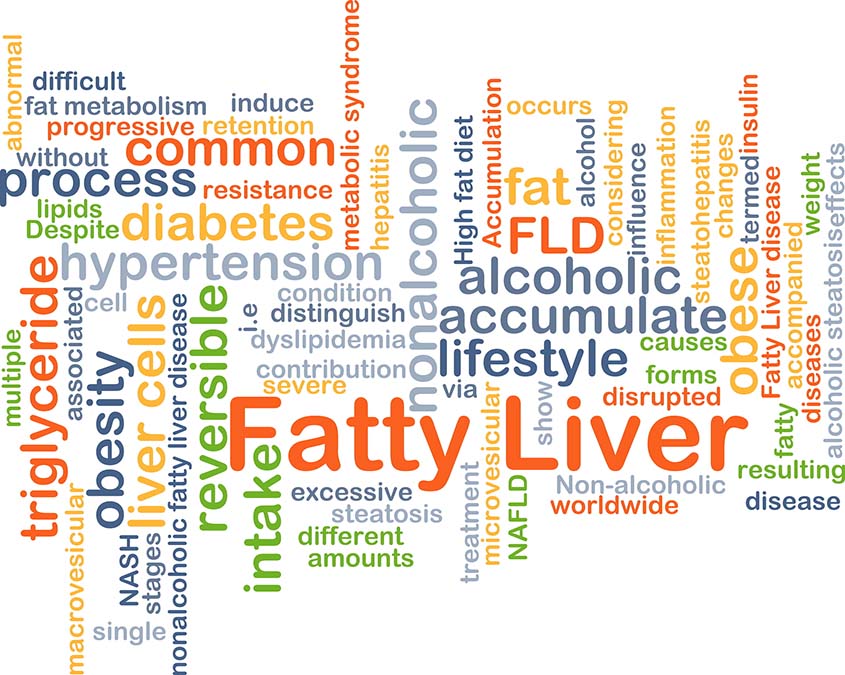 Almost one quarter of all adults suffer from some degree of non-alcoholic fatty liver. This can be fatal if left untreated.
Almost one quarter of all adults suffer from some degree of non-alcoholic fatty liver. This can be fatal if left untreated.
25 percent is huge, which is why it’s imperative we get to the bottom of it and find out why.
A study in the latest edition of the journal Cell Reports offers a simple solution.
Non-fatty liver disease happens when our bodies don’t metabolize enough fat and all the excess fat is stored in our livers.
SIRT6 is a protein and has been found to be involved in metabolic and other fat-related conditions like obesity, insulin resistance, and inflammation, so a team of Israeli researchers decided to find out whether it contributed to fatty liver disease as well.
Researchers examined the livers of mice with and without fatty livers and with and without active SIRT6 proteins to try to discover whether it contributed to fatty liver disease and to establish the mechanism through which SIRT6 contributes to this condition.
Their suspicions were right – mice that had active SIRT6 protein were less likely to have fatty livers.
They also noticed that SIRT6 activated another protein called peroxisome proliferator-activated receptor alpha (PPAR-alpha). PPAR-alpha promotes the burning of fat in our livers.
Therefore, the cooperation between PPAR-alpha and SIRT6 tells your body to burn fat so that it can either be used as energy or excreted.
When they compared mice during different metabolic stages, such as starvation, overeating, and normal dieting, they ascertained that mice with active SIRT6 proteins also helped to burn fat in tissue outside the liver.
Unfortunately, we do not yet know how to modify the activity levels of our SIRT6 proteins. They are normally activated by genes.
So, since we obviously do not want to genetically engineer humans to have higher SIRT6 activity, we need to find another solution.

 Overcoming IBD
Overcoming IBD Multiple Sclerosis
Multiple Sclerosis Banishing Bronchitis
Banishing Bronchitis Gum Disease Gone
Gum Disease Gone Overcoming Onychomycosis
Overcoming Onychomycosis Neuropathy No More
Neuropathy No More The Prostate Protocol
The Prostate Protocol Brain Booster
Brain Booster
 Ironbound
Ironbound
 Solution for Shingles
Solution for Shingles
 The Bone Density Solution
The Bone Density Solution
 The Ultimate Healing Protocol
The Ultimate Healing Protocol
 The Parkinson's Protocol
The Parkinson's Protocol
 The Chronic Kidney Disease Solution
The Chronic Kidney Disease Solution
 Overthrowing Anxiety
Overthrowing Anxiety The Fatty Liver Solution
The Fatty Liver Solution The Hypothyroidism Solution
The Hypothyroidism Solution
 The End of Gout
The End of Gout The Blood Pressure Program
The Blood Pressure Program
 The Oxigized Cholesterol Strategy
The Oxigized Cholesterol Strategy
 Stop Snoring And Sleep Apnea Program
Stop Snoring And Sleep Apnea Program
 The Arthritis Strategy
The Arthritis Strategy The Vertigo & Dizziness Program
The Vertigo & Dizziness Program The 3-Step Diabetes Strategy
The 3-Step Diabetes Strategy Hemorrhoids Healing Protocol
Hemorrhoids Healing Protocol The Erectile Dysfunction Master
The Erectile Dysfunction Master Weight Loss Breeze
Weight Loss Breeze The IBS Program
The IBS Program The Insomnia Program
The Insomnia Program The Migraine and Headache Program
The Migraine and Headache Program The Neck Pain Solution
The Neck Pain Solution The Menopause Solution
The Menopause Solution The Ejaculation Master
The Ejaculation Master The TMJ Solution
The TMJ Solution The Acid Reflux Solution
The Acid Reflux Solution The Fibromyalgia Solution
The Fibromyalgia Solution The Psoriasis Strategy
The Psoriasis Strategy